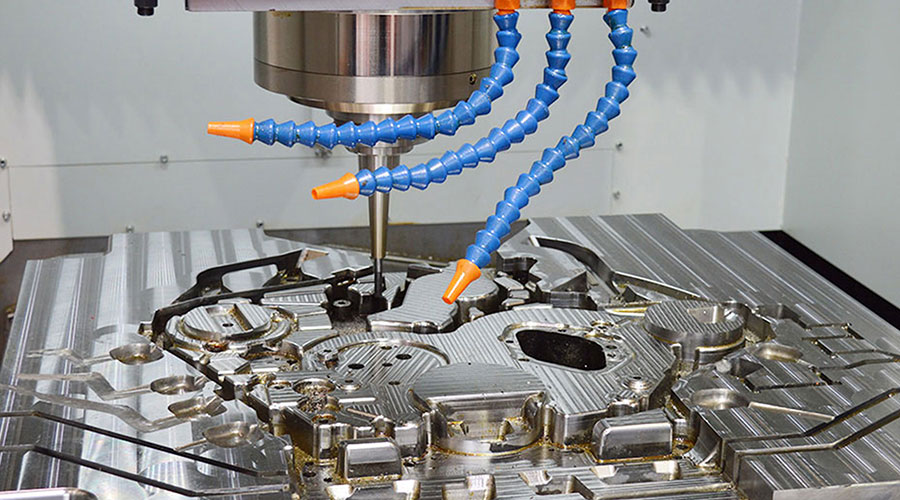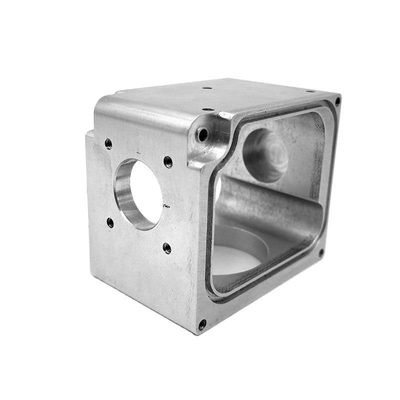Structural changes of titanium alloy rods during hot extrusion
Structural changes of titanium alloy rods during hot extrusion
|
The appearance of titanium rods is very similar to steel, with a density of 4.51 g / cm3, which is less than 60% of steel. It is the lowest density metal element among refractory metals. |

The mechanical properties of titanium, commonly known as mechanical properties, are closely related to purity. High-purity titanium has excellent machinability, good elongation and shrinkage, but low strength and is not suitable for structural materials. Industrial pure titanium contains appropriate impurities, has high strength and plasticity, and is suitable for making structural materials. The thermal conductivity of titanium and titanium alloy blanks is low, which will cause a great temperature difference between the surface layer and the inner layer during hot extrusion. When the temperature of the extrusion barrel is 400 degrees, the temperature difference can reach 200 ~ 250 degrees. Under the combined influence of suction strengthening and large temperature difference of the blank section, the metal on the surface and the center of the blank produce very different strength and plastic properties, which will cause very uneven deformation during the extrusion process. It produces large additional tensile stress, which becomes the source of cracks and cracks on the surface of extruded products. The hot extrusion process of titanium and titanium alloy products is more complicated than that of aluminum alloy, copper alloy, and even steel, which is determined by the special physical and chemical properties of titanium and titanium alloy.
So far, lubricants have to be used in the extrusion process of titanium rods. The main reason is that titanium will form fusible eutectic with iron-based or nickel-based alloy mold materials at temperatures of 980 degrees and 1030 degrees, thereby causing the mold to wear out strongly. When using graphite lubricant, deep longitudinal scratches can be formed on the surface of the product, which is the result of the work of the machining-titanium rod and titanium alloy rod sticking to the mold. When extruding the profile with glass lubricant, it will lead to a new type of defect "pitting", that is, a crack in the surface layer of the product. Studies have shown that the appearance of "markers" is due to the low thermal conductivity of titanium and titanium alloys, which causes the surface layer of the billet to cool violently and the plasticity to drop sharply.
Titanium alloys are classified as low-strength high-plasticity, medium-strength and high-strength, and range from 200 (low-strength) to 1300 (high-strength) MPa, but generally titanium alloys can be regarded as high-strength alloys. They are stronger than aluminum alloys, which are considered to be medium-strength, and can completely replace certain types of steel in strength. Compared with the rapid decline in strength of aluminum alloys at temperatures above 150 ° C, some titanium alloys can still maintain good strength at 600 ° C. The compact metal titanium is highly valued by the aviation industry because of its light weight and higher strength than aluminum alloys, which can maintain higher strength than aluminum at high temperatures. Given that the density of titanium is 57% of steel, its specific strength (strength / weight ratio or strength / density ratio is called specific strength) is high, and its corrosion resistance, oxidation resistance, and fatigue resistance are strong. 3/4 of titanium alloy is used as Structural materials represented by aviation structural alloys are mainly used as corrosion-resistant alloys. Titanium alloy has high strength and low density, good mechanical properties, good toughness and corrosion resistance. In addition, titanium alloys have poor process performance and are difficult to cut. In hot working, it is very easy to absorb impurities such as hydrogen, oxynitride and carbon. There is also poor abrasion resistance and complicated production process. The industrial production of titanium began in 1948. The need for the development of the aviation industry has enabled the titanium industry to grow at an average annual growth rate of about 8%. At present, the world's annual output of titanium alloy processed materials has reached more than 40,000 tons' nearly 30 kinds of titanium alloy grades. The most widely used titanium alloys are Ti-6Al-4V (TC4) 'Ti-5Al-2.5Sn (TA7) and industrial pure titanium (TA1, TA2 and TA3).
Link to this article: Structural changes of titanium alloy rods during hot extrusion
Reprint Statement: If there are no special instructions, all articles on this site are original. Please indicate the source for reprinting:https://www.cncmachiningptj.com/,thanks!
 PTJ® provides a full range of Custom Precision cnc machining china services.ISO 9001:2015 &AS-9100 certified. 3, 4 and 5-axis rapid precision CNC machining services including milling, turning to customer specifications,Capable of metal & plastic machined parts with +/-0.005 mm tolerance.Secondary services include CNC and conventional grinding, drilling,die casting,sheet metal and stamping.Providing prototypes, full production runs, technical support and full inspection.Serves the automotive, aerospace, mold&fixture,led lighting,medical,bicycle, and consumer electronics industries. On-time delivery.Tell us a little about your project’s budget and expected delivery time. We will strategize with you to provide the most cost-effective services to help you reach your target,Welcome to Contact us ( [email protected] ) directly for your new project.
PTJ® provides a full range of Custom Precision cnc machining china services.ISO 9001:2015 &AS-9100 certified. 3, 4 and 5-axis rapid precision CNC machining services including milling, turning to customer specifications,Capable of metal & plastic machined parts with +/-0.005 mm tolerance.Secondary services include CNC and conventional grinding, drilling,die casting,sheet metal and stamping.Providing prototypes, full production runs, technical support and full inspection.Serves the automotive, aerospace, mold&fixture,led lighting,medical,bicycle, and consumer electronics industries. On-time delivery.Tell us a little about your project’s budget and expected delivery time. We will strategize with you to provide the most cost-effective services to help you reach your target,Welcome to Contact us ( [email protected] ) directly for your new project.

- 5 Axis Machining
- Cnc Milling
- Cnc Turning
- Machining Industries
- Machining Process
- Surface Treatment
- Metal Machining
- Plastic Machining
- Powder Metallurgy Mold
- Die Casting
- Parts Gallery
- Auto Metal Parts
- Machinery Parts
- LED Heatsink
- Building Parts
- Mobile Parts
- Medical Parts
- Electronic Parts
- Tailored Machining
- Bicycle Parts
- Aluminum Machining
- Titanium Machining
- Stainless Steel Machining
- Copper Machining
- Brass Machining
- Super Alloy Machining
- Peek Machining
- UHMW Machining
- Unilate Machining
- PA6 Machining
- PPS Machining
- Teflon Machining
- Inconel Machining
- Tool Steel Machining
- More Material





